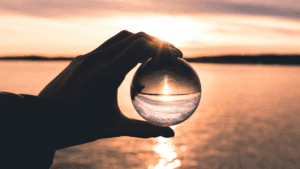The Magnetism of the Unattainable: Hardwired Cravings
Why we want what we can’t have is an age-old human puzzle that transcends culture, era, and circumstance. Across the centuries, philosophers and poets have pondered this persistent drive—and in the modern world, it remains as potent as ever, fueling marketing, romance, ambition, and even inner frustration. From forbidden relationships to designer goods just out of reach, the allure of the unattainable cuts across nearly every sphere of human life.
Neuroscience shows that desire intensifies when we perceive something as scarce or just beyond our grasp. Brain circuits driven by dopamine—our primary neurotransmitter for anticipation and reward—get activated with greater force when an object, opportunity, or person is elusive. As soon as something feels just out of reach, brain activity ramps up, sharpening focus and motivation while simultaneously raising emotional stakes. This describes why mere proximity to what we can’t have often feels so irresistible.
Understanding why we want what we can’t have doesn’t mean we’re weak-willed; it reveals a biological script that helps us survive and pursue growth. When harnessed with self-awareness, these brain signals can foster innovation, ambition, and creative solutions. But left unchecked, they may promote chronic dissatisfaction or fuel cycles of envy—challenging us to strike a balance between longing for more and finding contentment in the present. Why we want what we can’t have often drives our most persistent ambitions, shaping everything from daily choices to lifelong dreams.
The Evolutionary Advantage: Scarcity, Survival, and the Thrill of the Chase
One of the main reasons why we want what we can’t have stems from our earliest evolutionary wiring. For much of human history, scarcity meant survival risk, so our ancestors developed keen drives to seek out rare resources, new opportunities, and partners out of reach. This biological urgency promotes not just physical survival, but also social status, adaptation, and reproductive advantage.
When something is labeled off-limits—whether it’s food, territory, or social approval—the brain interprets it as especially valuable. The act of pursuit became a critical skill; those who were able to want what they couldn’t easily obtain were more likely to endure harsh environments and form resourceful communities. This ancient mindset persists: the moment an object or experience is perceived as exclusive or at risk of slipping away, it appears infinitely more captivating.
Today, why we want what we can’t have plays out in modern arenas: in love lives, job prospects, social circles, and the consumer market. Scarcity marketing, luxury branding, and even the “hard to get” dynamic in relationships tap into these time-tested neural responses, keeping the chase alive while sometimes leaving genuine fulfillment just out of reach.
Psychological Roots: Desire, Dopamine, and the “Grass Is Greener” Effect

Psychology also explains why we want what we can’t have by shining a light on the powerful role of dopamine and the paradox of pursuit. Our reward centers are more stimulated by the promise of something new or withheld than by consistent access. This phenomenon is what underpins the classic “grass is greener” effect—the sense that happiness, beauty, or satisfaction resides not in what we possess, but in what we lack.
Anticipation mixed with uncertainty creates a unique neurochemical cocktail: dopamine spikes when there’s a chance to attain something novel or rare, but it drops when we finally possess it. This chemical swing is why unrequited love, the pursuit of a coveted job, or a luxury car just out of budget feel so compelling. The mind fixates on what it lacks, crafting imaginative stories about how having it would bridge the gap between longing and contentment.
Social comparison amplifies this further. Witnessing others enjoy things we don’t own or relationships we wish we had only intensifies feelings of deprivation, fueling the cycle of endless desire. Awareness of this psychological process arms us with power—not to eradicate longing, but to recognize its influence on decision-making and emotional well-being.
Sociological Pressures: Social Comparison and the Age of Envy
Why we want what we can’t have is now turbocharged by a society that measures status and self-worth against others. Platforms like Instagram, TikTok, and LinkedIn provide endless highlight reels, triggering social comparison that can quickly spiral into envy or insecurity. Observing others’ curated success, romance, or material abundance can make our own lives seem lacking, regardless of what we actually possess.
The scarcity mindset is further embedded by cultural messages that equate happiness with acquisition and fulfillment with exclusivity. In relationships, this dynamic often creates the illusion that better love, friendships, or family bonds are just out of reach. In careers and lifestyles, it convinces us that satisfaction is always found in the next goal, never in the current achievement.
This social lens distorts reality, making it easy to overlook real joy, gratitude, and progress. Breaking free starts with conscious awareness: recognizing when comparison is driving desire and intentionally grounding ourselves in authentic values rather than appearances or fleeting trends.
The Neuropsychology of Scarcity: How “Not Enough” Shapes Decision-Making
Many people spend significant time and energy wondering why we want what we can’t have, often without realizing how it shapes everyday decisions and emotions. Scarcity doesn’t just affect what we want—it alters how we think. When the mind locks onto what’s missing, working memory narrows, and attention becomes rigidly focused. Researchers have found that when resources or opportunities are perceived as unavailable, cognitive bandwidth is drained, leaving less mental energy for problem-solving, patience, or creativity. This is a crucial insight into why we want what we can’t have, as it explains why fixating on unfulfilled desire often distracts us from enjoying what’s available.
Scarcity mindset shapes not only our goals and behaviors but also our emotional responses. The repeated pursuit of what remains elusive can create cycles of frustration, impulsivity, and even self-sabotage. Notably, the pursuit itself often becomes more enjoyable than the actual having; anticipation brings a dopamine-fueled rush, while attaining the goal may lead to an anti-climactic dip in mood or satisfaction.
Understanding the neuropsychology behind this process enables us to intervene in practical ways—by refocusing attention on abundance, cultivating gratitude practices, and promoting flexibility in thinking. These approaches support a healthier, more empowered relationship with longing and contentment.
The Role of Identity: Who Are We Without the Chase?
Why we want what we can’t have also has roots in personal identity and self-perception. The objects, achievements, or relationships we pursue often symbolize deeper values or represent the person we aspire to become. Wanting something unattainable can feel like striving for a better version of ourselves: more successful, more attractive, more admired.
Identity-driven desire explains why the chase is often more meaningful than the possession—pursuing new experiences provides a sense of growth and self-mastery. However, when our sense of self-worth hinges largely on acquiring what’s missing, intrinsic motivation may be replaced with perpetual dissatisfaction. This dynamic can lead to cycles of chasing ever-moving finish lines, rarely feeling whole or satisfied in the present moment.
Examining the role of meaning and identity in our desires helps us pause and reflect: Are we motivated by genuine curiosity, passion, or growth—or are we chasing approval, status, or relief from inner emptiness? Realigning goals with authentic values redirects longing toward fulfillment that isn’t dependent on what we can’t have.
The Illusion of Control: Fantasy, Frustration, and Modern Marketing

Another reason why we want what we can’t have lies in how fantasy feeds a sense of control and possibility. The mind, when faced with limits, will often create elaborate scenarios in which obstacles are overcome, outcomes are perfect, and the unattainable becomes part of our story. This daydreaming process is fueled by both optimism and frustration, reinforcing the belief that happiness exists just on the other side of what we currently lack.
Modern marketing leverages this phenomenon by inflating desire for products, lifestyles, or experiences that seem just out of reach. Limited editions, countdowns, and exclusivity tactics activate scarcity’s reward response, making the mundane appear magical simply because it is temporarily unavailable or restricted.
However, constantly pursuing what we can’t have often comes with a cost: it minimizes satisfaction with reality and keeps joy perpetually deferred. Understanding this dynamic doesn’t eliminate ambition or aspiration, but it does encourage discernment—reminding us that sometimes, fantasy is sweeter than fact, and presence is more powerful than endless pursuit.
Personal Desires: Self-Improvement and the Endless Quest
On a personal level, why we want what we can’t have often shapes our self-improvement journeys and aspirations for growth. Whether it’s the pursuit of a healthier body, greater wisdom, or inner peace, the longing for something just out of reach gives shape to countless goals. People often fantasize about traits or achievements they lack—such as better confidence, more discipline, or greater creativity—igniting a chase that rarely feels complete, regardless of progress.
This relentless drive is rooted in both natural curiosity and societal messages about self-optimization. Social media and cultural trends amplify the promise that fulfillment is just one transformation away, convincing us that happiness lies beyond our current capabilities. Yet, this pursuit can lead to chronic dissatisfaction and comparison, raising the question: are we inspired by genuine passion, or driven by a sense of missing out?
Recognizing why we want what we can’t have in personal growth empowers us to build more realistic, compassionate paths to improvement. By celebrating incremental steps and honoring present strengths, we turn the chase into motivation rather than frustration—making self-development an authentic and rewarding journey. Sometimes, wanting what you can’t obtain becomes a powerful force that motivates change or fuels persistent longing, shaping life goals and emotional experiences in unexpected ways. Ultimately, the cycle of why we want what we can’t have can only be broken through mindful self-reflection and a willingness to shift perspective.
Professional Ambitions: Careers, Success, and the Next Level
The professional world is another arena where why we want what we can’t have propels ambition, competition, and the intensity to achieve more. Employees often fixate on promotions, accolades, or opportunities just outside their current role, believing that the next job or skill will finally deliver purpose and recognition. This focus on what’s missing continuously drives high performers and entrepreneurs, while also stoking anxiety and feelings of inadequacy. In professional settings, why we want what we can’t have frequently leads us to pursue promotions, influence, or recognition that always seems just beyond our current reach.
Organizations and marketplaces fuel this chase by positioning success as a moving target—pushing workers to covet milestones, titles, or compensation that seem perpetually out of reach. The result is a cycle of striving and longing, where satisfaction rarely lasts, and the “grass is greener” mentality prevails. Understanding why we want what we can’t have is crucial for professionals seeking not only achievement, but also lasting fulfillment.
When ambition is grounded in your authentic values, and when you find meaning in current contributions, the pursuit of what’s next becomes a source of healthy motivation rather than confusion or burnout. By redefining success and acknowledging progress, professionals can break free from perpetual dissatisfaction and build careers that foster both growth and well-being.
Romantic Longing: Chemistry, Fantasy, and Forbidden Attraction

Romantic relationships may be the most universally felt example of why we want what we can’t have. The thrill of unrequited love, the temptation of forbidden attraction, and the allure of novelty in romance reflect deep psychological and evolutionary patterns. In romantic relationships, why we want what we can’t have may spark longing and passion, but also frustration and missed opportunities for genuine connection. Desire often intensifies when a partner is unavailable, uninterested, or distant—sparked by the brain’s anticipation-fueled reward circuits and the magnetic pull of the unattainable.
Cultural stories, films, and social norms reinforce the narrative that romance is most vivid when challenged—when obstacles and uncertainty create tension and excitement. This explains why longing often persists for ex-partners or individuals who remain emotionally elusive, while familiarity may dull passion. The dynamic underscores why we want what we can’t have, but also why this pursuit may never fully satisfy the heart’s deeper longings.
Awareness of these patterns creates space for healthier relationships and self-understanding. By exploring the roots of romantic desire and recognizing the impact of chemistry, fantasy, and social comparison, couples and individuals may embrace gratitude for shared moments and find fulfillment in intimacy that’s present and reciprocal—not just possible, but real.
Strategies for Rewiring Desire: Self-Awareness, Gratitude, and Intentional Choice
Confronting why we want what we can’t have opens up opportunities for meaningful personal development. The first step is mindful awareness: noticing the moments when longing is triggered—by comparison, scarcity, or fantasy—and pausing to check what’s truly driving desire. Are we inspired by genuine growth, or caught in a loop of chasing the unattainable?
Gratitude practices interrupt scarcity cycles by bringing attention to abundance, progress, and meaningful relationships. By shifting focus to what is within reach, the brain rewires its reward circuits, making present-moment fulfillment both possible and rewarding. Intentional decision-making—setting goals aligned with core values, pausing before impulsive action, and reflecting on the “why” behind cravings—builds emotional resilience and self-mastery over time.
Ultimately, transforming our relationship with desire doesn’t mean suppressing ambition or longing. It’s about harnessing the energy of the chase for authentic goals while staying grounded in appreciation and self-awareness, turning the ancient puzzle of why we want what we can’t have into a source of insight, growth, and true satisfaction. Developing awareness of why we want what we can’t have is a critical step in transforming the energy of desire into constructive personal growth.
#WhyWeWantWhatWeCantHave #ScarcityMindset #DesirePsychology #Envy #Neuroscience #HumanBehavior #PersonalDevelopment #Dopamine



